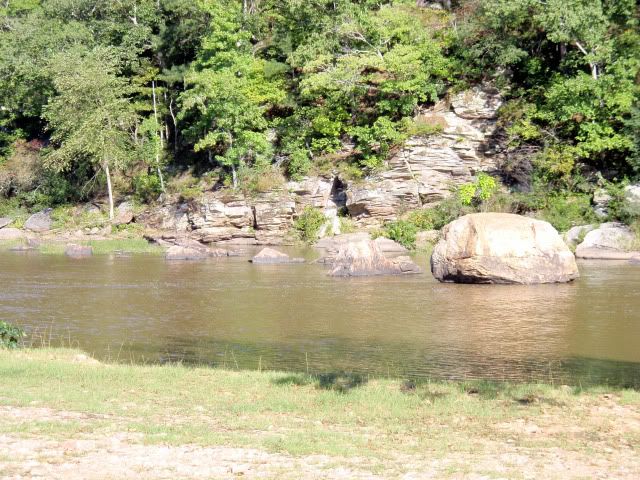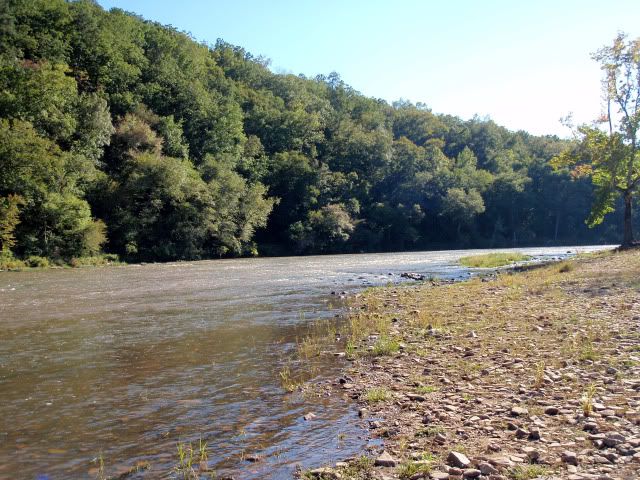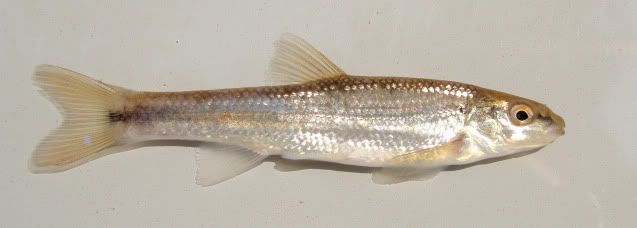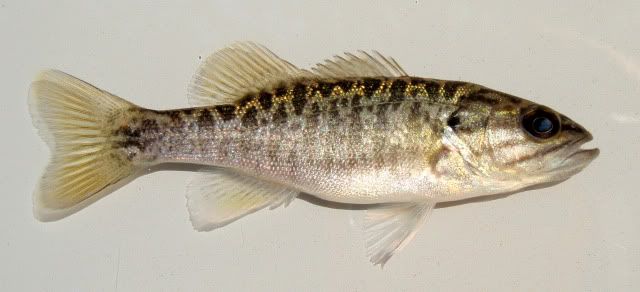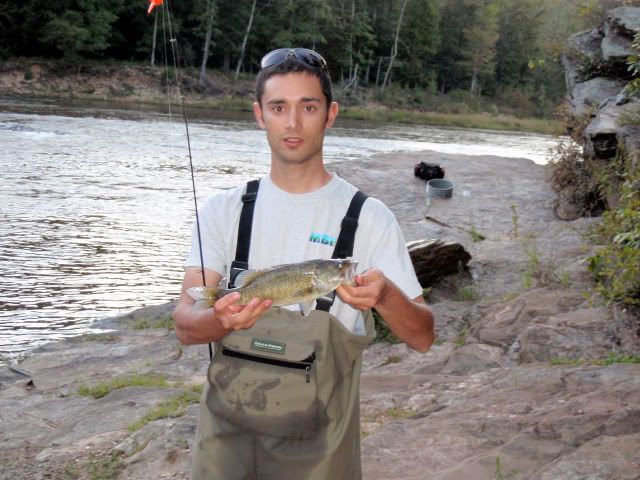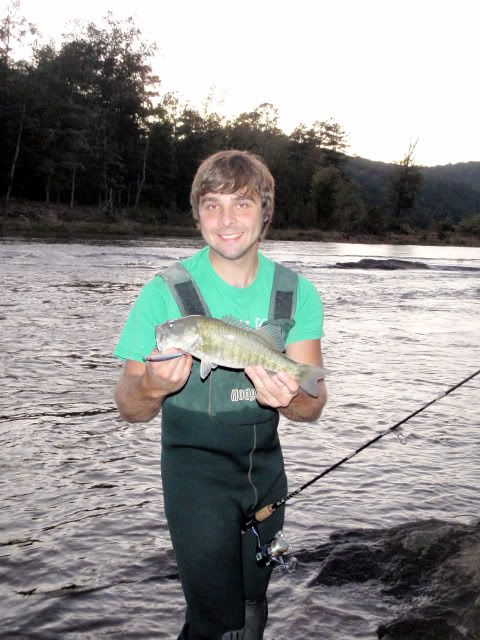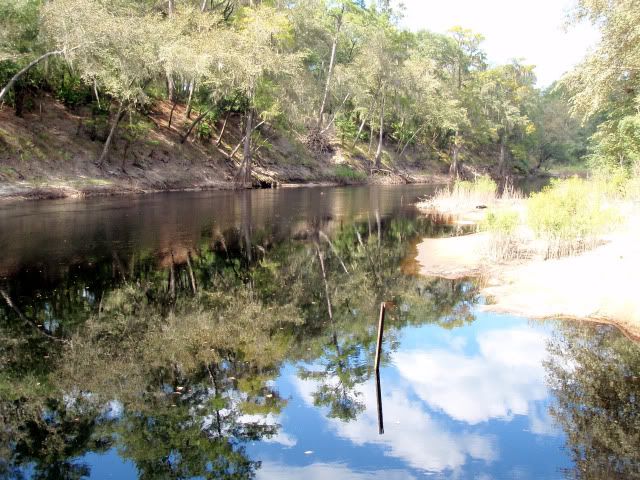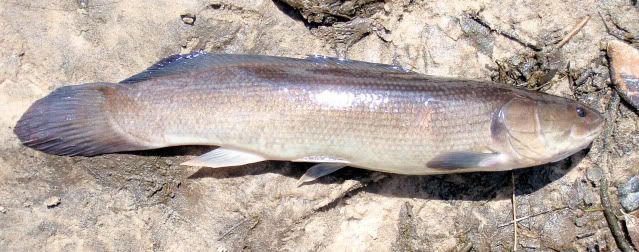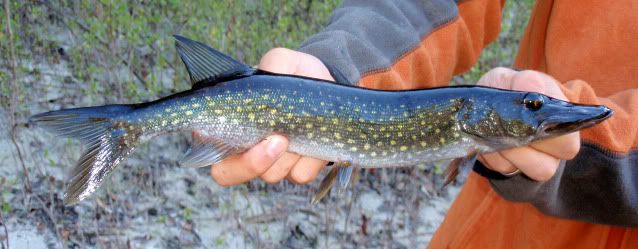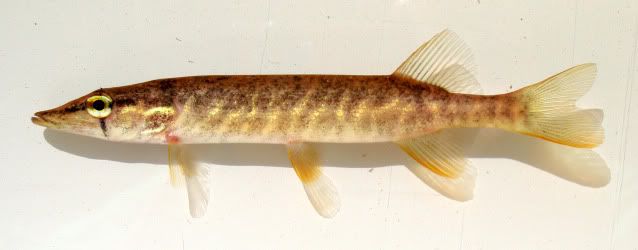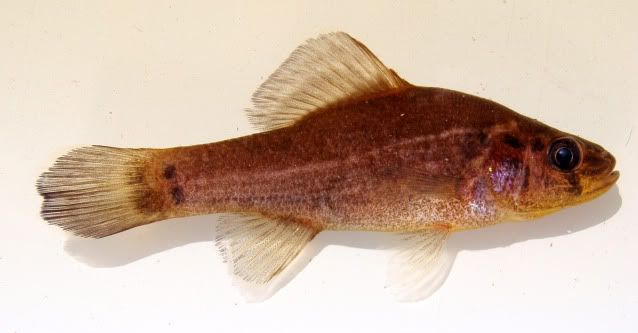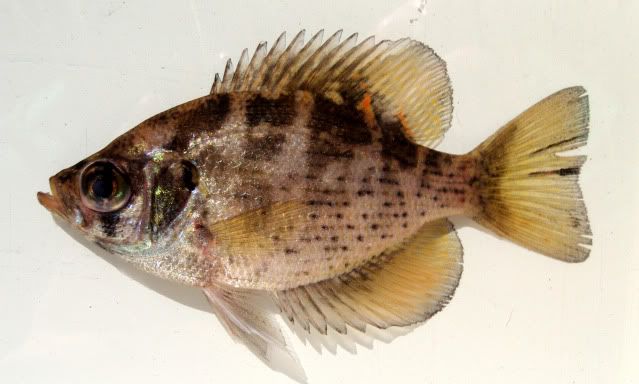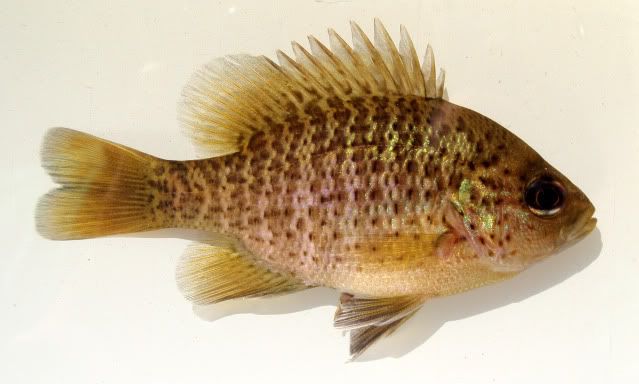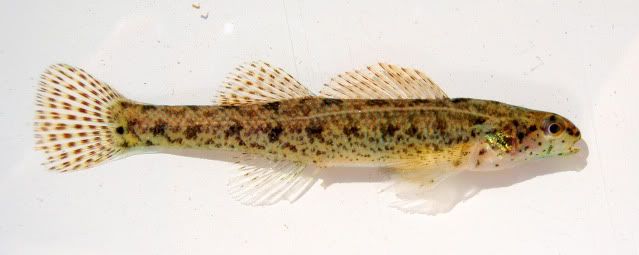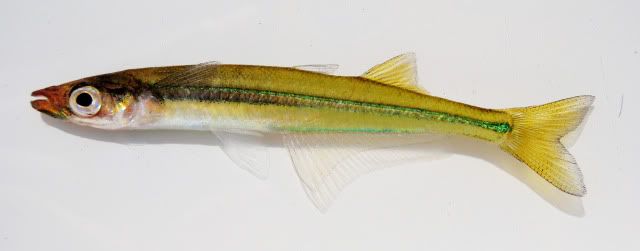I've got plenty of stories to share from the 2009 NANFA Convention Trip I took this year. I know I'm a little late in reporting on them, but stepping out for a week to go catch fish makes for lots of unfinished work. Anyways, as a bit of a last minute occurrence, Brian Zimmerman (smbass) called me up and said he was going to the convention and wanted someone to ride with him. I told him that I just couldn't do it at first, but then I got to thinkin', 'Is there ever going to be a time where it's convenient to go?'...and with that I decided I'd just better go!
Brian had a good mind to think of some sites he wanted to visit on the way down to the convention, so we of course took our time getting to Florida. A day of driving on Tuesday landed us in the Appalachian Mountains of northern Georgia. We camped there and were greeted by this sight in the morning:
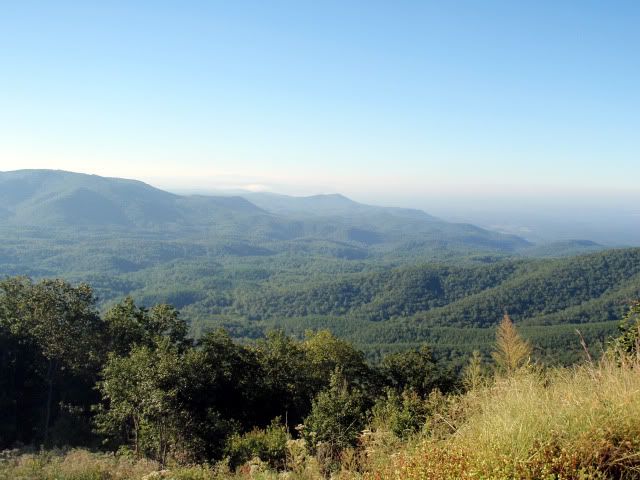
Not a bad view, and as you can tell, we were way up there (at least from the viewpoint of someone born and raised in Illinois). We didn't see any bears though, and that's probably all for the better. After heading into town to pick up our Georgia fishing license from the Pawn Shop & Tackle, we made our way to the Conasauga River. Brian and I chose the Conasauga River because it's home to endemic species, has superior fish habitat, and provides us with the potential to see numerous fish species we'd never seen before (at least that I've never seen before, Brian had been to the Conasauga once before). Here's how our short morning stop at the Conasauga panned out:
Date: September 30, 2009
Location: Conasauga River northeast of Dawnville, GA.
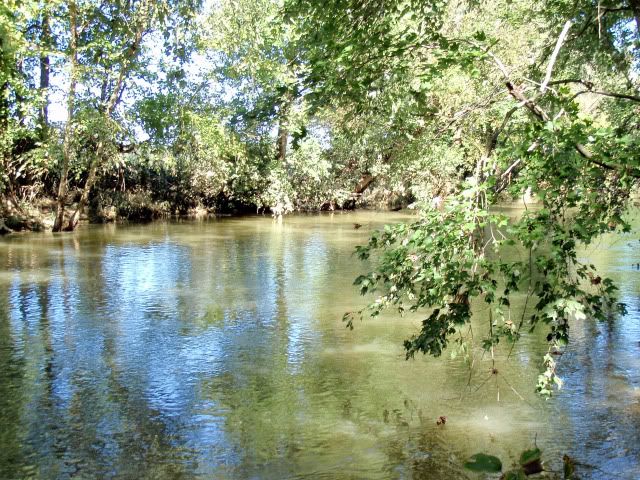
Water Level: High. A big rainfall event caused the nearest USGS gage to peak to 6000 cfs (with normal levels being 800 cfs). Flow today was probably near 2500 cfs. Areas sampled ranged from 0.1m – 1.0m deep.
Water Quality: Surprisingly clear for being as flooded as it was. A big difference could be seen from this flooded stream and the flooded streams of northwestern Ohio. This was a great example of how land use practices play a large role in controlling erosion.
Substrate: Small gravel, sand, detritus, and some cobble. Silt levels in this stream were very low, even with the recent large rainfall event.
Collected:
Blacktail Shiner (Cyprinella venusta)
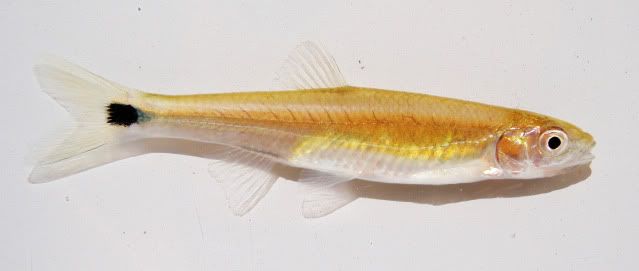
– caught surprisingly few of these, despite their relative abundance in this watershed. This picture shows off the prominent “black tail” of this species.
Silverstripe Shiner (Notropis stilbius)
Largescale Stoneroller (Campostoma oligolepis)
Golden Redhorse (Moxostoma erythrurum)
Alabama Hogsucker (Hypentelium etowanum)
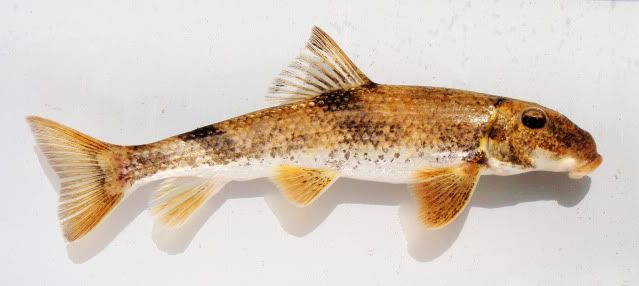
– caught one adult bunkered down in the swift flowing water mid-stream. The fish had a noticeably rounded region between the eyes, as compared to the concave region seen on the Northern Hogsucker.
Mosquitofish sp. (Gambusia sp.) – didn’t take time to ID this species. It may have been G. holbrooki.
Black Crappie (Pomoxis nigromaculatus) – according to what I’ve read about the range of these two species, the Black Crappie is by far the dominant Crappie sp. of the south.
Largemouth Bass (Micropterus salmoides) – found one juvenile in the over-hanging vegetation near the shoreline.
Alabama Bass (Micropterus henshali)
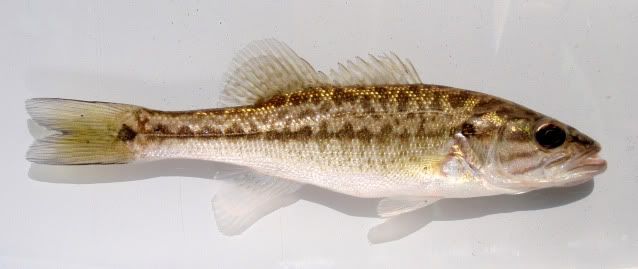
– looked very similar to the Spotted Bass. However, the fish we observed here seemed to be much more terete than the Spotted Bass that I’m more familiar with.
Blackspotted Sunfish (Lepomis punctatus)
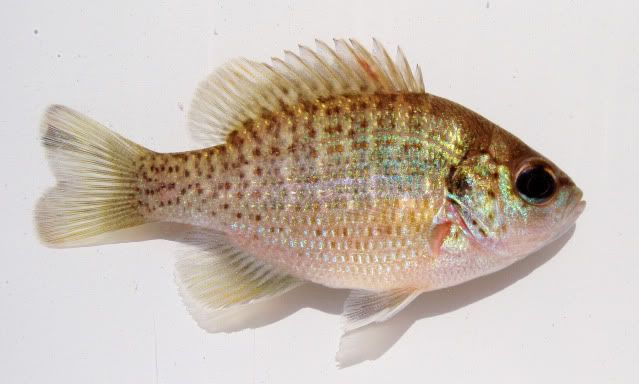
– the fish here looked like they may have been hybrids of Blackspotted Sunfish x Redspotted Sunfish. Brian explained to me that this area is the “overlap” region of both these Sunfish’s ranges.
Bluegill (Lepomis macrochirus)
Warmouth (Lepomis gulosus) – juveniles were fairly abundant in the flooded backwater areas.
Central Longear Sunfish (Lepomis megalotis megalotis)
Redear Sunfish (Lepomis microlophus) – found one small one in the flooded vegetation. There certainly were a lot of Centrarchids in the flooded vegetation of this river.
Green Sunfish (Lepomis cyanellus)
Redbreast Sunfish (Lepomis auratus) - this was my first time seeing this southern ranging Sunfish species. I was disappointed to see only small juveniles here and not any of the big, brightly colored males.
Blackbanded Darter (Percina nigrofasciata)
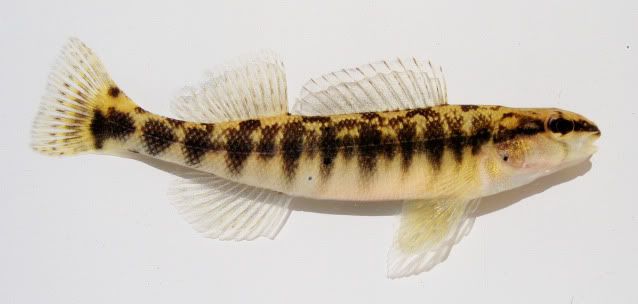
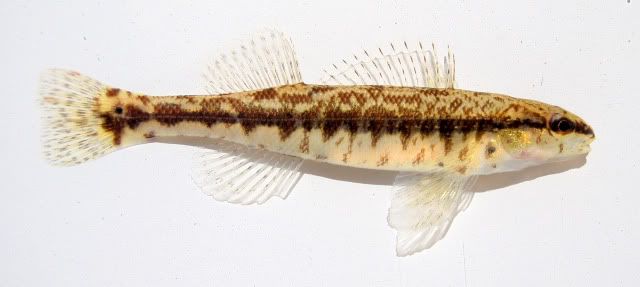
– very common darter species that was found in ranging habitats from swift flowing riffles to backwater areas. Sexual dimorphism might be shown here with the top fish being male and the bottom female.
Speckled Darter (Etheostoma stigmaeum)
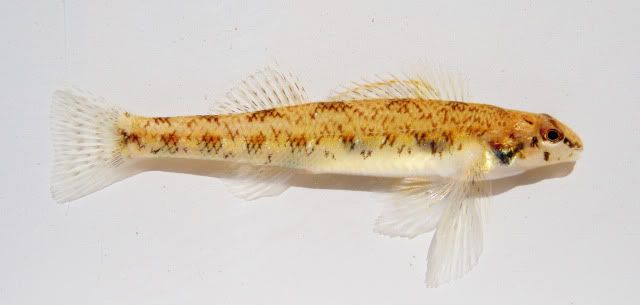
Coosa Darter (Etheostoma coosae)
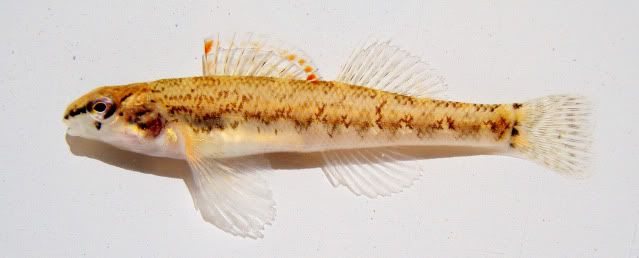
– found only one small one in a riffle.
Sculpin sp. (Cottus sp.) – not exactly sure which Sculpin sp. may reside in this drainage.
Notes: Brian and I sampled a small segment of this stream due to the high water conditions. The Centrarchid community here was really astounding, along with the relative clarity despite recent torrential rains. Brian and I sampled with an 8’ x 4’ minnow seine.
Despite the flooding we got to see a good number of fish species. We didn't bother with any collecting here because we didn't want to bother with it this early in the trip. I do have to say it was quite surprising to see the water in such good condition recently after northern Georgia received a reported 20" of rain through 3 consecutive days of rainfall, less than a week before our arrival. I'd hate to see the rivers around me in northwestern Ohio dumped full of that much rain in such a short period. From here, we traveled a few hours downstate to the Flint River in central Georgia. I'll post that report when it's completed.
--to be continued--




